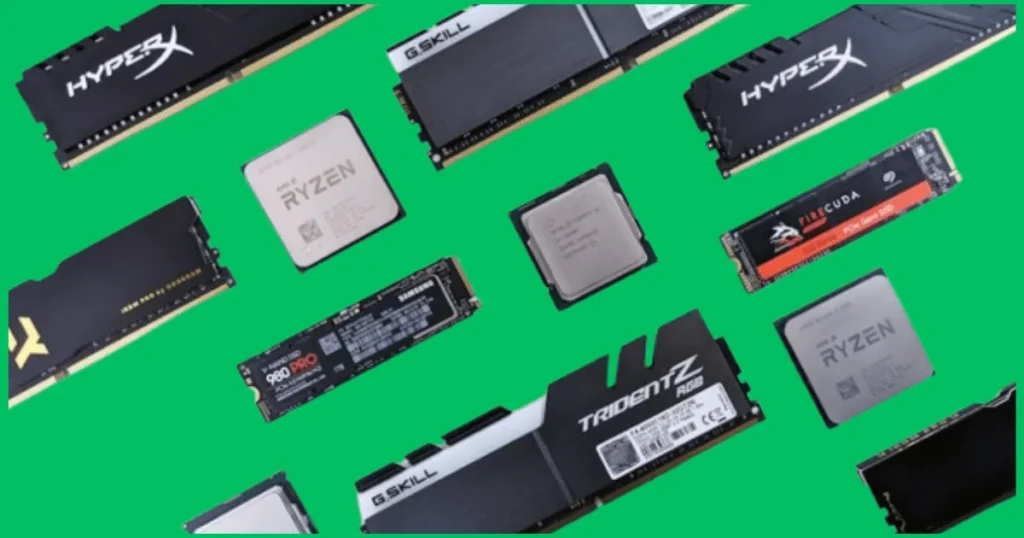RAM What Does It Do? Why It’s Key to Great Performance?

Introduction RAM what does It do?
RAM What Does It Do? The functioning and performance of computing systems use RAM extensively. RAM plays a critical role in smooth operation and Several tasks at once on a desktop computer, laptop, or smartphone. This article defines random-access memory RAM, describes how it works, and discusses its usefulness in modern computing.
Table of Contents
ToggleWhat is RAM?
RAM is a type of memory that is volatile and keeps commands and data things are required for your computer or device to work swiftly. RAM, as against to permanent storage media like HDDs or SSDs, is designed for quick access to data and is erased upon shutting down the device.
How Does RAM Work?
RAM serves as a conduit between permanent storage and the CPU. The required data is stored in RAM for instant access when you launch an application or open a file. This is a streamlined procedure:
- Data Loading: The CPU retrieves data from storage and places it in RAM.
- Processing: The CPU accesses and processes the data stored in RAM.
- Execution: The system executes tasks based on the processed data.
What Does RAM Do?
RAM is essential for several key functions in a computing device:
- Multitasking: RAM enables your device to run several apps at once without experiencing noticeable lag. For instance, you can simultaneously stream music, write papers, and browse the web.
- Faster Data Access: RAM provides near-instantaneous access to data, reducing the time required to retrieve information compared to storage devices.
- Temporary Storage: RAM stores temporary data such as program instructions, cached files, and operating system processes, enabling efficient task execution.
- System Responsiveness: A sufficient amount of RAM ensures smooth performance, quick application launches, and minimal lag.
Types of RAMs
- Dynamic RAM (DRAM):
- The most common type used in computers and laptops.
- Regularly refreshed to retain data.
- Static RAM (SRAM):
- Faster and more expensive than DRAM.
- Used in cache memory for CPUs.
- SDRAM (Synchronous DRAM):
- Synchronized with the system clock for better performance.
- DDR RAM (Double Data Rate RAM):
- Future generations like DDR3, DDR4, and DDR5 offer increased speeds and more bandwidth.
- VRAM (Video RAM):
- Dedicated to graphics processing in GPUs.
How Much RAM Do You Need?
The amount of RAM required depends on your usage:
- Basic Tasks (4GB-8GB):
- Browsing, word processing, and streaming.
- Multitasking and Gaming (16GB):
- Running multiple applications and playing modern games.
- Professional Work (32GB or more):
- Video editing, 3D rendering, and software development.
How RAM Impacts Performance
- Speed:
- More RAM allows the CPU to process data faster, improving overall performance.
- Multitasking:
- Insufficient RAM can cause system slowdowns or crashes when handling multiple applications.
- Gaming:
- RAM affects game loading times and smooth gameplay. Many modern games recommend at least 16GB of RAM.
- System Boot Time:
- Adequate RAM reduces the time it takes for the operating system to load during startup.
Upgrading RAM: Is It Worth It?
Redesigning a PC’s Slam is one of the simplest and most effective ways to enhance its presentation. Among the advantages are: better multitasking skills.
- Faster application performance.
- Extended lifespan of your device.
Common Myths About RAM
- More RAM Always Means Better Performance:
- While more RAM can help, it won’t improve performance if your tasks don’t require additional memory.
- Unused RAM is Wasted RAM:
- Modern operating systems manage RAM efficiently by allocating resources as needed.
- All RAM is the Same:
- The type, speed, and compatibility of RAM matter for optimal performance.
Tips for Optimizing RAM Usage
- Close Unnecessary Applications:
- Free up RAM by shutting down programs you’re not actively using.
- Upgrade Your RAM:
- Add more RAM to meet your system’s requirements.
- Use Lightweight Software:
- Choose applications that use fewer system resources.
- Restart Your Device:
- Regular reboots clear the RAM and improve performance.
RAM vs. Storage: Understanding the Difference
Aspect | RAM | Storage |
Purpose | Temporary data storage for quick access. | Permanent data storage. |
Volatility | Data is lost when powered off. | Data remains intact. |
Speed | Extremely fast. | Slower compared to RAM. |
Capacity | Typically measured in GB (4GB-64GB). | Measured in GB/TB (256GB-4TB or more). |
Future of RAM Technology
- DDR5 RAM:
- Faster speeds and greater efficiency, increasingly adopted in modern systems.
- LPDDR (Low Power DDR):
- Designed for mobile devices to save energy while maintaining performance.
- Heterogeneous Memory:
- Combining RAM and storage for seamless data access in future computing systems.
- Quantum Memory:
- An emerging field that could revolutionize data storage and access.
In Conclusion
RAM What Does It Do? RAM is essential to contemporary computing since it allows for quicker processing, effective multitasking, and an improved user experience all around. Knowing the functions of RAM and how it affects device performance enables you to make well-informed choices on system optimization and upgrades.
Having the appropriate amount of RAM can change how you utilize technology, regardless of your level of experience. To keep your smartphone quick, responsive, and prepared for the tasks at hand, make judicious RAM investments.
FAQs
Indeed, the system may freeze or crash if there is insufficient RAM because it cannot manage running programs or tasks.
By enabling games to load resources like textures and models rapidly and minimizing latency, RAM guarantees fluid gameplay.
Because it enables the operating system to perform commands more effectively, more RAM can shorten start-up and shutdown times.
More RAM is needed for enhanced functionality and multitasking in modern operating systems and apps since they are more resource-intensive.
Virtual memory simulates more RAM by using a piece of the hard drive, whereas physical RAM is the hardware that is placed in a computer.


